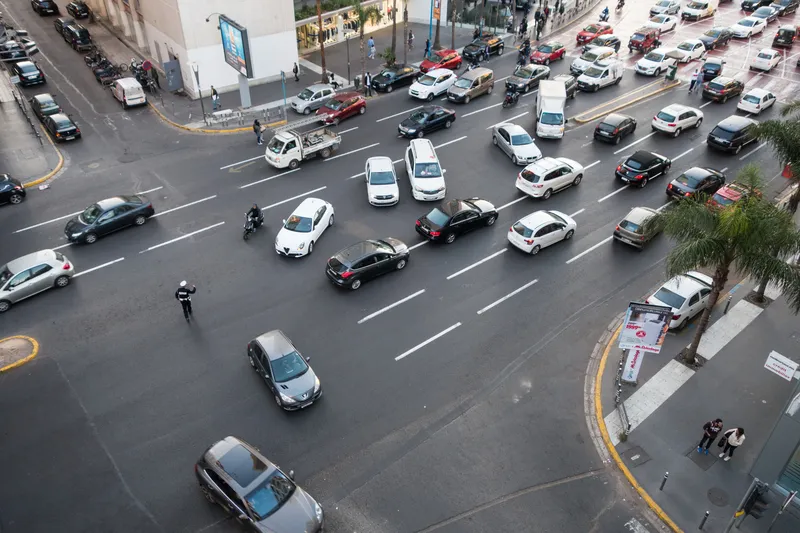A new study released by the Allianz Center for Technology (AZT) found that traffic accidents are the leading cause of death for youths, regardless of a country’s economic well-being. Thirty-one percent of all traffic-related deaths in the world are youth and young adults aged between 15 and 29 years. This translates to more than 400,000 lives lost per year, which exceeds youth deaths caused by diseases, drug use, suicide, violence or war-related events.
Whether a traffic-related death of a youth occurs i
October 31, 2014
Read time: 3 mins
A new study released by the 6027 Allianz Center for Technology (AZT) found that traffic accidents are the leading cause of death for youths, regardless of a country’s economic well-being. Thirty-one percent of all traffic-related deaths in the world are youth and young adults aged between 15 and 29 years. This translates to more than 400,000 lives lost per year, which exceeds youth deaths caused by diseases, drug use, suicide, violence or war-related events.
Whether a traffic-related death of a youth occurs in a low-, middle- or high-income country plays an insignificant role. According to AZT, youth traffic deaths vary only slightly between 31.5 per cent in low-income countries, 32.0 per cent in middle-income countries and 28.5 per cent in high-income countries.
Every year, nearly 1.3 million people die due to traffic accidents, and more than 50 million are injured, making road safety a major global issue. Per 100,000 inhabitants, 18 lose their lives in traffic accidents. This places traffic-related deaths eighth on the list of leading causes of death, according to the latest Global Status Report on Road Safety from the1819 World Health Organisation (WHO). Recent developments, however, suggest that it will become the world's fifth-leading cause of death in 2030 if no appropriate countermeasures against traffic accidents are taken.
Germany is in the top five for lowest death rates in EU, with a road death rate of 4.7 per 100,000 inhabitants. That places Germany fifth among the 28 EU member states in deaths resulting from traffic accidents. Sweden has the lowest rate in the EU with 3.0 deaths per 100,000 inhabitants, while Greece has the highest at 12.2 deaths. The highest death rates globally are found in the Dominican Republic (41.7), Thailand (38.1) and Venezuela (37.2). In the United States, the death rate is 11.4.
The AZT takes such numbers and forecasts seriously in its efforts to further road safety measures.
“For more than 40 years, AZT has taken an active role in the development of traffic safety, and through research and prevention campaigns aims to make roads safer for all,” says Christoph Lauterwasser, director of the AZT. “Whether we are dealing with distracted driving, pedestrian and cyclist safety, the safety issues and standards surrounding assistant driving systems and automated driving, or how to properly secure cargo in the car, AZT experts have always made important contributions to the automotive industry, traffic regulations and all other aspects of traffic safety.”
Whether a traffic-related death of a youth occurs in a low-, middle- or high-income country plays an insignificant role. According to AZT, youth traffic deaths vary only slightly between 31.5 per cent in low-income countries, 32.0 per cent in middle-income countries and 28.5 per cent in high-income countries.
Every year, nearly 1.3 million people die due to traffic accidents, and more than 50 million are injured, making road safety a major global issue. Per 100,000 inhabitants, 18 lose their lives in traffic accidents. This places traffic-related deaths eighth on the list of leading causes of death, according to the latest Global Status Report on Road Safety from the
Germany is in the top five for lowest death rates in EU, with a road death rate of 4.7 per 100,000 inhabitants. That places Germany fifth among the 28 EU member states in deaths resulting from traffic accidents. Sweden has the lowest rate in the EU with 3.0 deaths per 100,000 inhabitants, while Greece has the highest at 12.2 deaths. The highest death rates globally are found in the Dominican Republic (41.7), Thailand (38.1) and Venezuela (37.2). In the United States, the death rate is 11.4.
The AZT takes such numbers and forecasts seriously in its efforts to further road safety measures.
“For more than 40 years, AZT has taken an active role in the development of traffic safety, and through research and prevention campaigns aims to make roads safer for all,” says Christoph Lauterwasser, director of the AZT. “Whether we are dealing with distracted driving, pedestrian and cyclist safety, the safety issues and standards surrounding assistant driving systems and automated driving, or how to properly secure cargo in the car, AZT experts have always made important contributions to the automotive industry, traffic regulations and all other aspects of traffic safety.”









